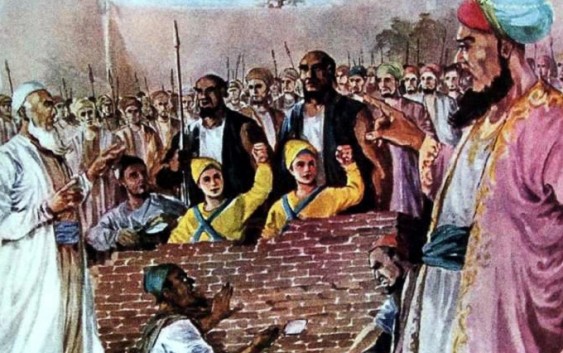Guru Gobind Singh’s History and Contribution to Sikhism
Guru Gobind Singh’s History

Guru Gobind Singh was a Sikh Guru, born on o22 December 1666 AD in Patna, India. His father was the ninth Sikh Guru Tegh Bahadur, and his mother was Gujri. His childhood called him Gobind Rai, and he was the couple’s only son. His father, Tegh Bahadur, roams everywhere to preach the concept of Guru Granth. In 1670 AD, he went to Anandpur lonely and informed his family to join him in Anandpur. So Gobind Rai and his family started to Anandpur in 1671 AD and learned primary education during his journey. Finally, in 1672 AD, they joined Tegh Bahadur in Anandpur and continued their education in the village. Execution of Tegh Bahadur:
Due to the lunatic activities of Aurangzeb, the Hindus had been converting to Islam on the sword edge. Then Guru Tegh Bahadur went to the capital city of Delhi to talk with the officials of the Mughals about the conversions. The evil-minded Mughal officers arrested and imprisoned Tegh Bahadur and tortured them to convert him to Islam. But Tegh Bahadur refused their orders and bore the sufferings of the Mughal soldiers. This news made Aurangzeb furious and, with the temple, ordered the officials to execute Tegh Bahadur publically. This, the Ninth Sikh Guru Tegh Bahadur, passed away when Guru Gobind Singh was only nine years old.
How Gobind Rai became Guru Gobind Singh?
Later the execution of Guru Tegh Bahadur, Gobind Rai, was formally made the Guru on the annual harvesting festival in 1676 AD. During this period, relations with the Mughals became significantly worse. Guru Gobind Singh chose dedicated warriors who would happily sacrifice their lives for the protection of Humanity and created an army with them. On Baisakhi day in 1699 AD, he invited all the followers of Sikhism to congregate at Anandpur. He made sweetened water with Punjabi enhanced at the congregation and called the mixture ‘Amrit’.
Then he asked the followers of Sikhism who were willing to sacrifice their lives for the Guru’s sake, who came and drink the mixture. At first, five men came collectively towards the Khalsa and drank the sweetened water from the Khalsa. As soon as they consumed the water, their bodies were baptized Sikhs, and the word Sikh was added to the last of their real names. Guru Gobind also baptized Sikh and named himself ‘Gobind Singh’. Later several men and women were baptized in Sikhism.
Guru Gobind Singh Ji Vs Aurangzeb

Guru Gobind Singh and Sikh warriors fought against the Mughal forces in many significant battles. They were the battle of Basoli, the Battle of Nadaun, the action of Anandpur and many more battles that terrified the Aurangzeb forces and left the Mughal Emperor sleepless nights. During these battles, many brave Sikh warriors and their own two sons lost their lives. Mughal army men also captured his younger son, who kept him alive inside a wall and killed him due to his unaccepting Islam. Despite these tragic incidents, the Guru continued the fighting against the Mughals. Hence, these battles continued until the death of Aurangzeb in 1707 AD.
Guru Gobind Singh’s Death
Aurangzeb’s son Bahadur Shah came to the throne and respected the Sikh Guru Gobind Singh and increased friendly relations with the Sikhs. But Wazir Khan, who had fought with the Singh forces, did not like their cordial relationship. So he secretly commissioned two Afghans to kill Gobind Singh at any risk. Due to this commission, Wasil Beg and Jamshed Khan secretly followed Guru Gobind Singh in the Deccan area of India. They entered the camp at the river Godavari at Nanded. Jamshed Khan came before Guru Gobind suddenly and stabbed in the heart. In this sudden incident, Guru Gobind Singh became conscious and killed Wazir Khan. The bodyguards killed another Wasil Beg. With the stabbed wounds, Guru Gobind Singh passed away o7 October 1708 AD.